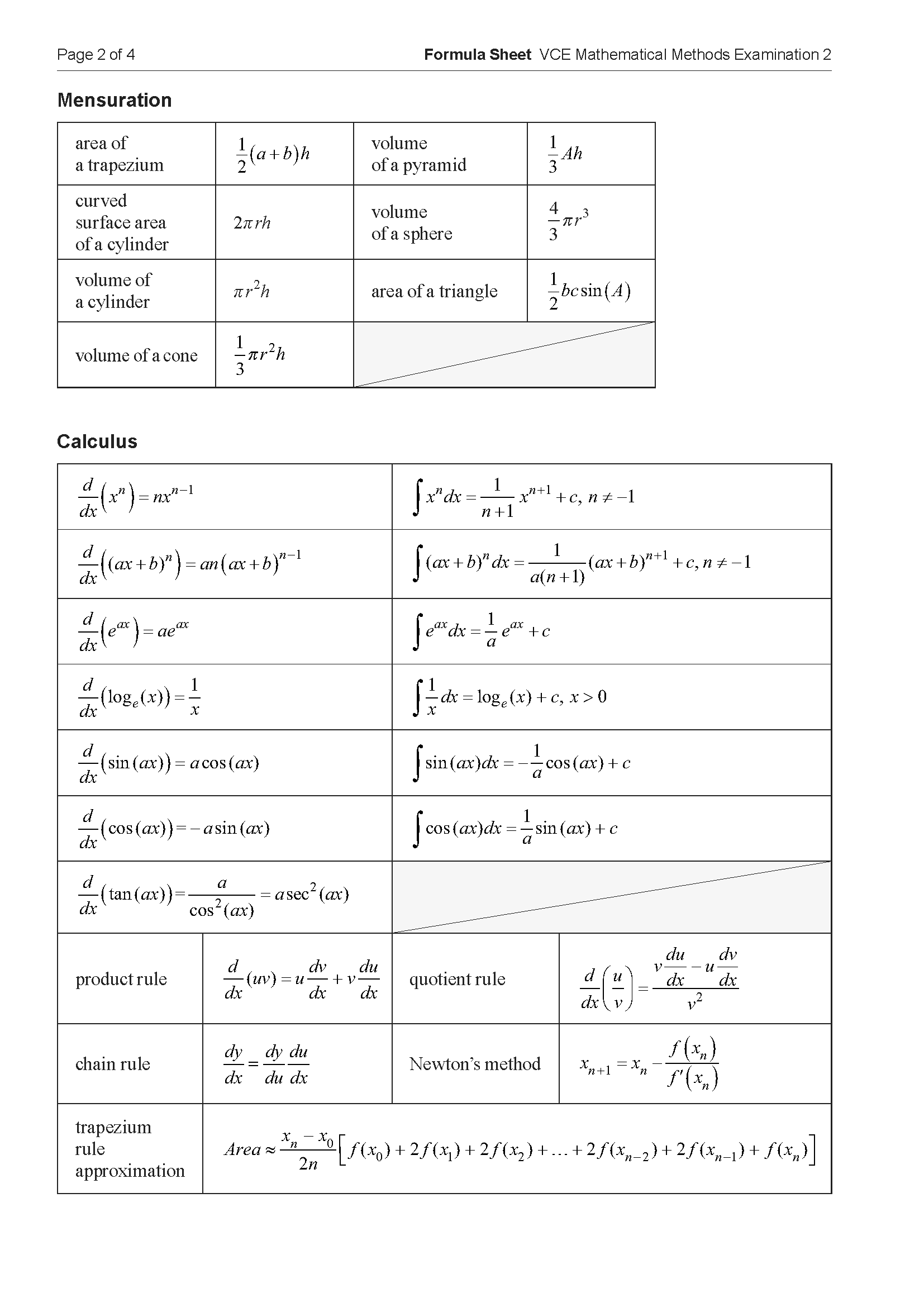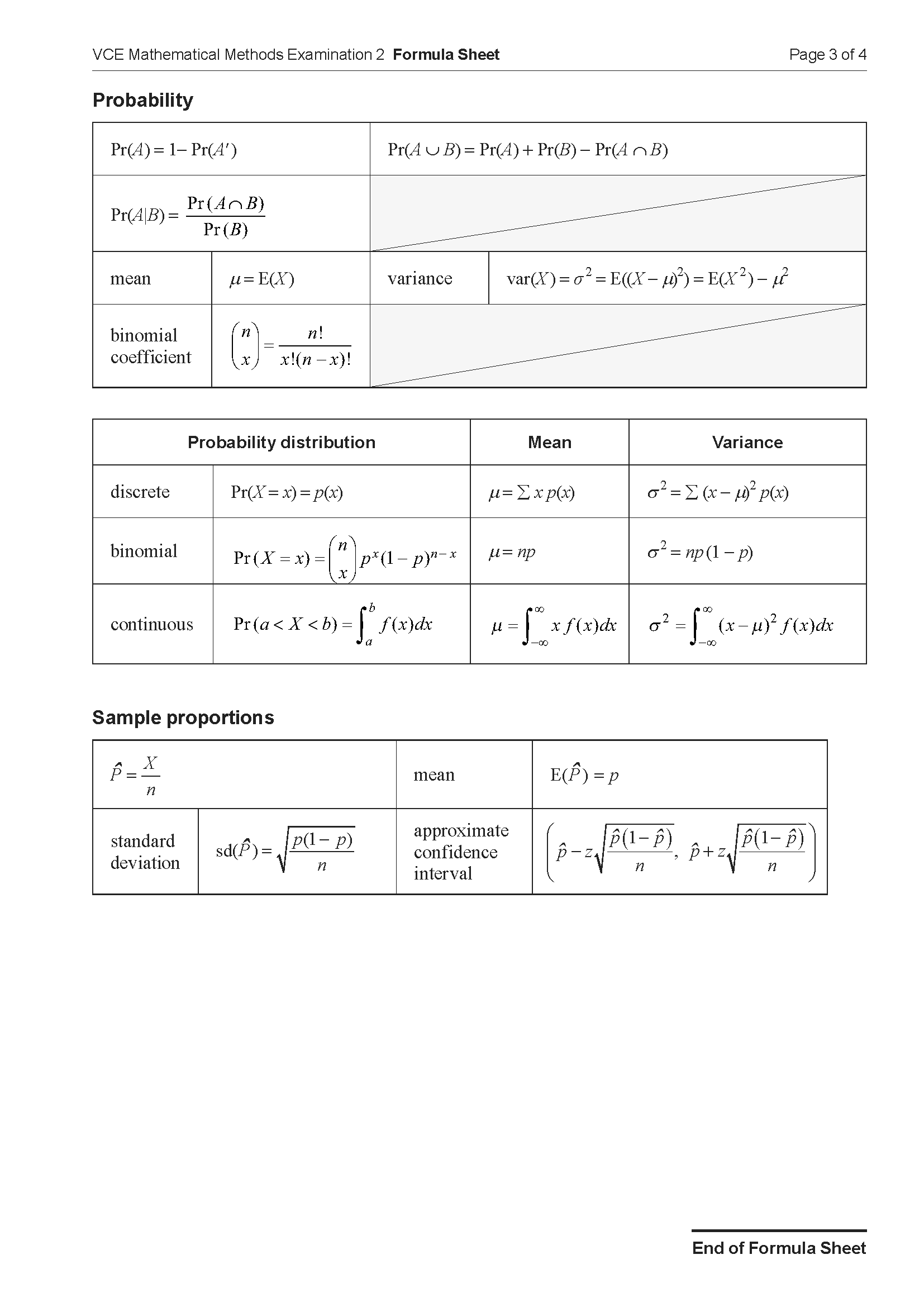VCE Maths Methods Basic Probability Mini Test 2
Number of marks: 10
Reading time: 2 minutes
Writing time: 15 minutes
Section A – Calculator Allowed
Instructions
• Answer all questions in pencil on your Multiple-Choice Answer Sheet.
• Choose the response that is correct for the question.
• A correct answer scores 1; an incorrect answer scores 0.
• Marks will not be deducted for incorrect answers.
• No marks will be given if more than one answer is completed for any question.
• Unless otherwise indicated, the diagrams in this book are not drawn to scale.
A box contains five red marbles and three yellow marbles. Two marbles are drawn at random from the box without replacement.
The probability that the marbles are of different colours is
- A. \(\frac{5}{8}\)
- B. \(\frac{3}{5}\)
- C. \(\frac{15}{28}\)
- D. \(\frac{15}{56}\)
- E. \(\frac{30}{28}\)
End of Section A
Section B – No Calculator
Instructions
• Answer all questions in the spaces provided.
• Write your responses in English.
• In questions where a numerical answer is required, an exact value must be given unless otherwise specified.
• In questions where more than one mark is available, appropriate working must be shown.
• Unless otherwise indicated, the diagrams in this book are not drawn to scale.
Two boxes each contain four stones that differ only in colour.
Box 1 contains four black stones.
Box 2 contains two black stones and two white stones.
A box is chosen randomly and one stone is drawn randomly from it.
Each box is equally likely to be chosen, as is each stone.
a. What is the probability that the randomly drawn stone is black? 2 marks
b. It is not known from which box the stone has been drawn.
Given that the stone that is drawn is black, what is the probability that it was drawn from Box 1? 2 marks
For events \(A\) and \(B\) from a sample space, \(\Pr(A|B) = \frac{1}{5}\) and \(\Pr(B|A) = \frac{1}{4}\). Let \(\Pr(A \cap B) = p\).
a. Find \(\Pr(A)\) in terms of \(p\). 1 mark
b. Find \(\Pr(A' \cap B')\) in terms of \(p\). 2 marks
c. Given that \(\Pr(A \cup B) \le \frac{1}{5}\), state the largest possible interval for \(p\). 2 marks
End of examination questions
VCE is a registered trademark of the VCAA. The VCAA does not endorse or make any warranties regarding this study resource. Past VCE exams and related content can be accessed directly at www.vcaa.vic.edu.au

